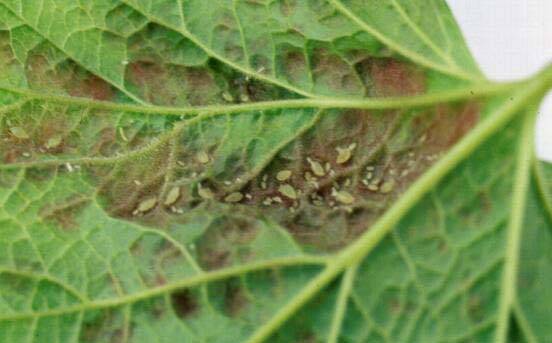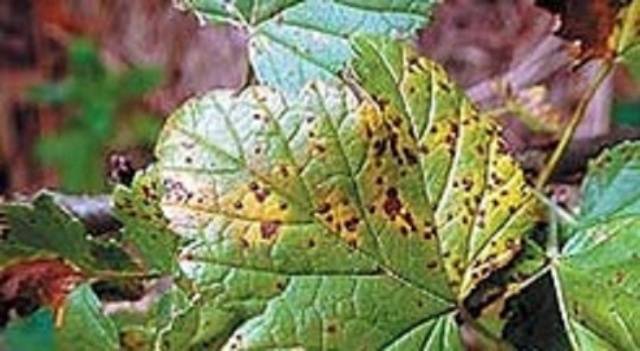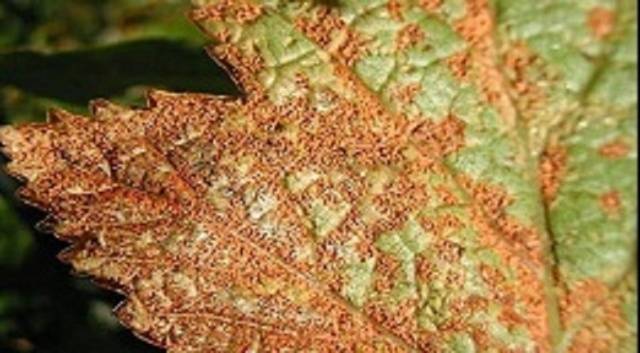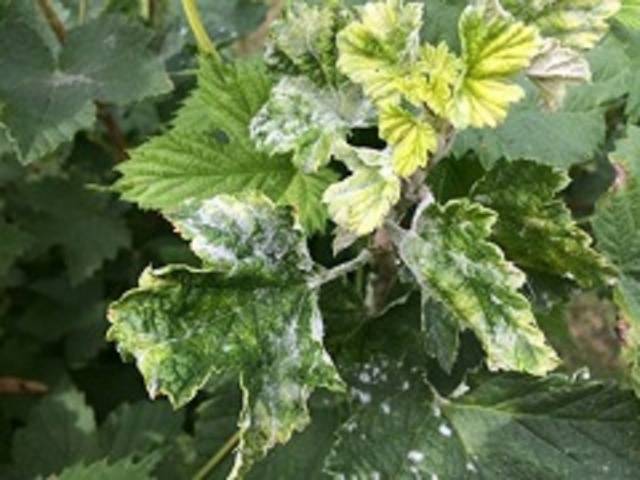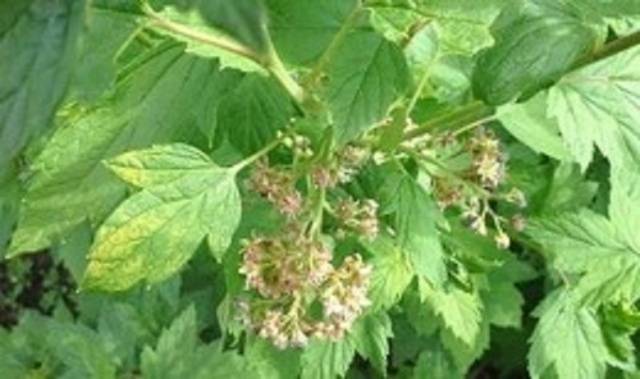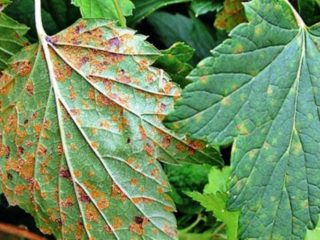Content
Red currants, like black and white, are one of the healthiest berries grown by gardeners in their gardens. The berries of these shrubs contain a lot of trace elements useful for human health. The leaves of the plant are used for salting and pickling vegetables, for making delicious and aromatic tea, compotes, jams and preserves are prepared from fruits. It is a shame to tears if the leaves and the whole plant are sick or suffer from an attack of pests. One such harmful insect on red currants is gall aphid... We decided to talk in more detail about its harmful effects and how to deal with it in our article.
What is redcurrant aphid
By biological definition galls on plants are ugly swellings on leaves and shoots, painted in different colors depending on the type of pathogen or pest. They are in the form of ink nuts (cecidia). Purple-red spots and ugly formations are formed on the leaves of red currants (see photo), and the reason for this is a microscopic insect - the red-gall aphid. It is difficult to see it on the back of the leaves, but it can cause enormous harm, up to the death of the plant.
The size of an adult female red currant aphid reaches 2-3 mm, they are wingless or winged, depending on the regeneration. During the season, both flying and creeping females can lay several clutches of eggs (black, oblong, microscopic in size), from which green caterpillars emerge. They quickly turn into adult insects and are ready for their own reproduction. One female aphid can produce about 10 generations of its own kind over the summer. By these indicators, one can judge the number of pests attacking red currant bushes, causing the appearance of red spots and swellings on the leaves of different sizes.
Red currant leaves, especially young shoots, are in great danger from the attack of a huge number of gluttonous pests that feed on plant juices, piercing their delicate and soft leaf tissues with special proboscis.
The aphids that settle on the leaves of the red currant attract ants who like to feast on the honeydew secreted by the aphids. Pad is a sweet and sticky liquid, rich in proteins and carbohydrates. Ants, protecting aphid colonies on currants, scare away ladybirds, preventing them from destroying aphids.
Flying from one bush to another, the aphid transfers pathogens of fungal, bacterial and viral infections to healthy currant bushes, infecting them and putting them in mortal danger. Red currants (like white ones) are more vulnerable than black currants. She is less resistant to disease and often suffers and dies if she does not receive timely treatment.
Diseases of red currant
In spring and early summer, berry bushes are not only attacked by pests, with the beginning of flight and movement of insects, symptoms of various diseases can also appear on young shoots and juicy soft leaves of white, black and red currants, pathogens of which are carried by arthropods and winged "aggressors".
Symptoms and Treatment
Illness: anthracnose
Symptoms of the disease: small red spots appear on the leaves, which grow, merge into a large brown and shapeless spot, leaf petioles become thinner, darken, leaves dry out and fall off prematurely.
Causes: high humidity plus high air temperature (during frequent rains), insect vectors, windy weather, transferring spores from a diseased plant to healthy bushes.
Treatment and prevention: in the fall - process currant bushes with Bordeaux liquid (1% solution), be sure to dispose of all infected parts of the plant, burn fallen leaves. In the spring spray the plant with copper sulfate (1% solution), dig up the soil near the bush, treat it with the same solution. Before flowering - you can use chemicals: epin, topsin-M, zircon. During fruiting - only biological agents are used for processing: phytospori, gamair and others.
Disease: goblet rust
Symptoms of the disease: currant leaves with this fungal disease are covered with reddish-brown spots, soft growths appear in the form of small pads on the back of the leaf blade, which can crack and release millions of microscopic spores, infecting all the plants around.
Causes: the presence of weeds (sedges) on the garden plot, on which fungi often find their main habitat. In June or July, mushroom plantations on weeds reach their maximum size, the pads containing spores burst, increasing the infected zone under the influence of the wind in the area from 25 to 300 meters.
Disease treatment and prevention: in autumn, remove all branches affected by the fungus, collect and burn the fallen leaves, do not use in compost heaps. Treat the currant bushes in autumn, early spring, before flowering with special fungicides (see above), for the entire season there should be at least three sprays.
Disease: spheroteka (powdery mildew)
Symptoms of the disease: on the fruits and leaves of red currants, a gray-white bloom similar to flour appears, later the leaves twist and dry, the berries that have not yet ripened fall, the young growth of the plant stops.
Causes: infested weeds, the ingress of fungus from insects, the spread of spores by gusts of wind, excessive humidity in the air with frequent rains, when a favorable environment for the propagation of fungal infections is created.
Prevention and treatment of the disease: treat the plant at least 3-4 times per season with fungicides, in the early stages we recommend manually cutting off the affected leaves and berries, from folk remedies, soda solution is popular for such treatments (dissolve 50 g of baking soda or soda ash per 10 liters of water).
Disease: red currant septoria
Symptoms of the disease: there are two types of septoria - rusty, when bright orange bumps are formed on the leaves of red currants, and white, in this case, the spots are round, gray-white with brown edging.
Causes: thickened planting of bushes, the presence of weeds, infection through insects or in the wind.
Prevention and treatment: in this case, the frequent treatment of plants with fungicides and bacterial preparations, a huge selection of which is offered in specialized stores, also saves. Act strictly according to the instructions attached to the packaging of each product, do not exceed the nominal concentration of the substance, preparing from them the necessary solution for processing red currant bushes.
Illness: reversion (terry)
Symptoms of the disease: lack of fruits for 3-5 years, mutation of leaf plates (leaves are three-lobed instead of the usual five), excessive growth of young shoots that thicken the bushes.
Causes: contamination from diseased plants.
Treatment: drugs for the treatment and prevention of this disease do not yet exist. The only way to get rid of it and a measure to protect other plantings is to completely uproot and burn the diseased bush. Unfortunately, this disease has been little studied, drugs and ways to combat it have not yet been invented, but in order to reassure gardeners, we note that it is extremely rare. In summer cottages and in household plots, where the density of plantings of red currants is small, it is almost never found. The reversion flares up in the territories of agricultural firms, where the technology of growing currants is violated and an increased frequency of planting bushes is allowed.
Conclusion
If you love your garden and protect each plant from pests and diseases, then your labor for their benefit will pay off "a hundredfold." Each bush and tree will thank you with a bountiful harvest, will delight you with its healthy appearance, and their fruits will help you prepare delicious juices, jams, preserves that your family will enjoy all year round.
